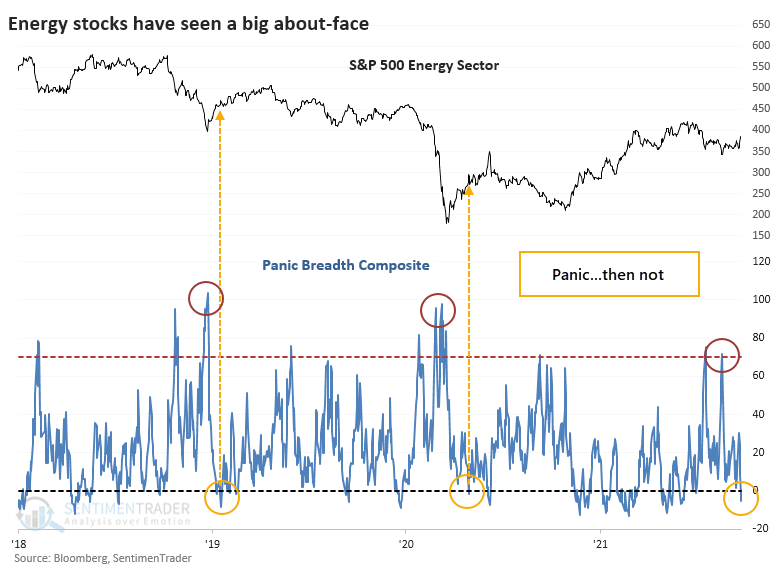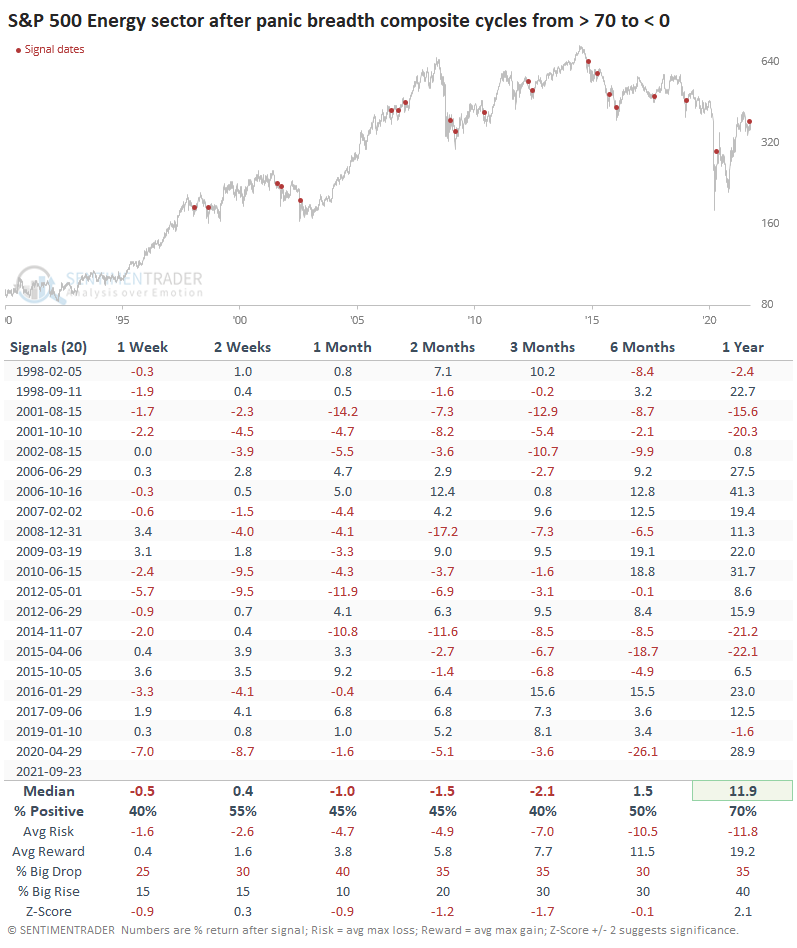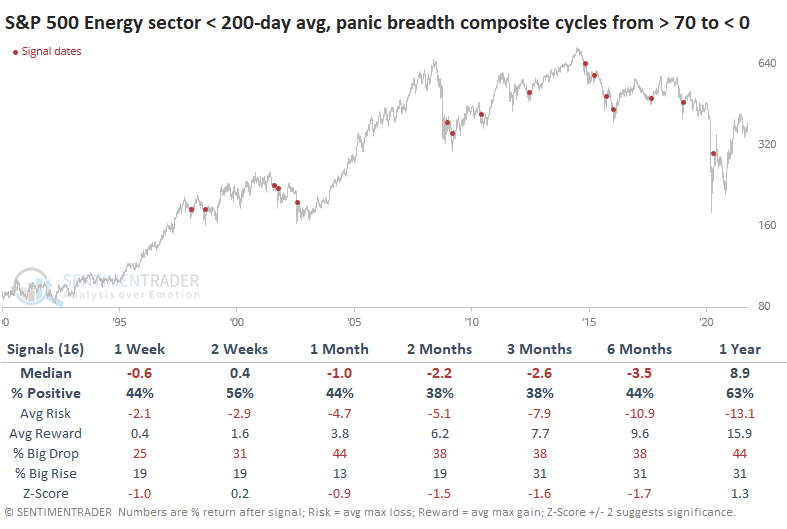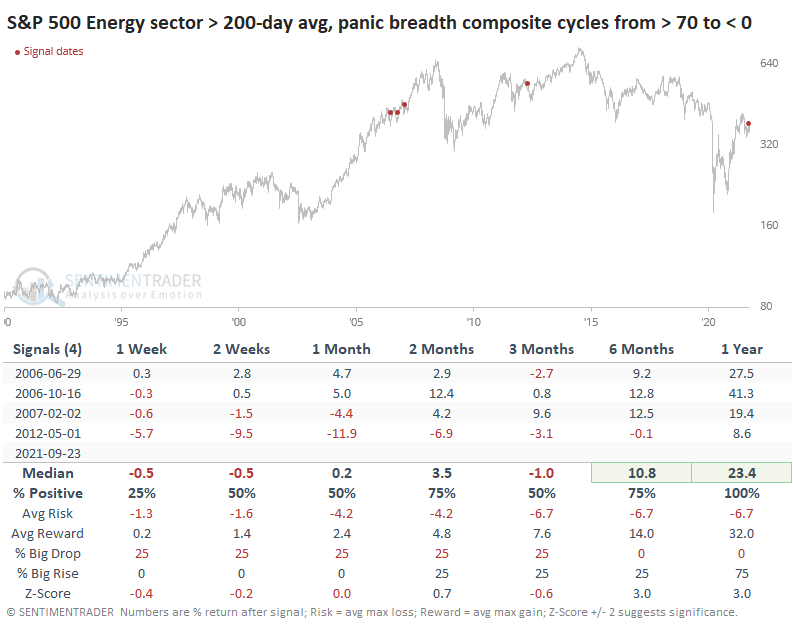The Energy Sector's Panic Breadth Reversal

Like we saw with the Hang Seng and Industrials, Energy stocks have seen something of a panic. But unlike the other two, these stocks have also seen a quick about-face.
Using the same concept as the other two, and computing a composite breadth measure that aggregates nine different breadth metrics to detect hints of panic, Energy stocks suffered a panic spike in mid-August. But within a 30-day window, the panic completely reversed and went into negative territory. It's been relatively rare to see "negative panic" in recent years.

There have been two recent times when the Panic Breadth Composite reversed from above 70% to below zero within 30 days, in January 2019 and April 2020. Volatility was extremely high following the initial pandemic rebound but the sector did work higher both times for a couple of months before giving back those gains.
A LONG-TERM LOOK AT PANIC REVERSALS
Other times when investors in Energy stocks panicked by selling almost everything and then did a complete about-face, the sector tended to struggle in the months ahead. Over the next three months, only 40% of the signals saw the sector trade higher. The risk/reward was poor, and there was more of a tendency to see a big drop than a big rise.

Volatility tends to be higher during bear markets, and the overwhelming majority of signals occurred when the S&P 500 Energy sector was below its 200-day moving average. Out of 20 breath reversals, 16 of them triggered during bear markets. And so it makes sense that rallies during bear markets tended to see below-average returns going forward.

PANIC REVERSALS IN BULL MARKETS
There were only four other times it triggered when above the 200-day, like it did this time. The success rate was higher (as much as we can read into a sample size of four), but not without volatility. Over the next year, Energy stocks rallied each time, but three of the four instances were clustered in an 8-month window.

The Risk/Reward Table shows quite a bit of risk among the four. Three of them suffered more than a 5% loss at some point during the next few months, and one was more than 10%.

With signals like this, losers tend to start losing right away as sellers see their first real opportunity to get out at a good price. While that can happen with winning signals, too, the selling tends to be milder and briefer. Overbought conditions are seen as less of a barrier and perhaps even a sign of unusual and persistent strength, which attracts even more buyers. The sector has a lot to prove, and this will be a good test. If the stocks can hold together in the weeks ahead, this reversal in panic should prove to be a lasting sign of a change in character.

